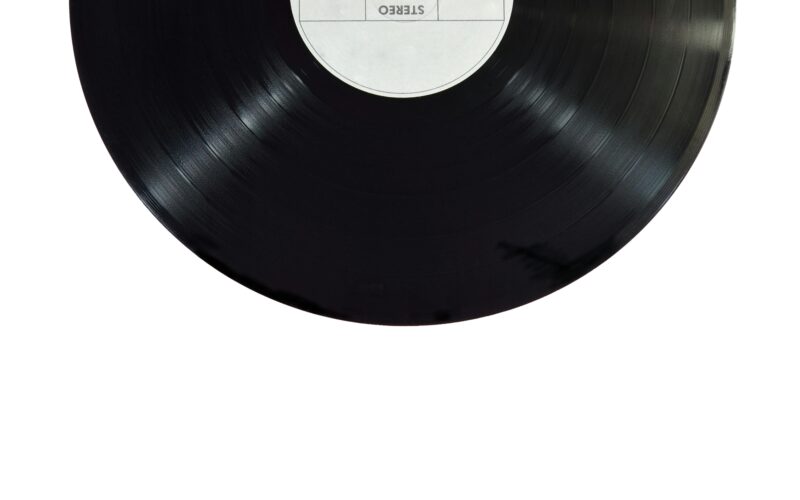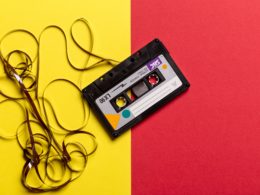As highlighted in recent lawsuits involving superstars Katy Perry and Ed Sheeran, certain musical elements, such as ostinatos, chord progressions, and harmonic rhythms, are generally not copyright-protected.1[1]Gray v. Hudson, 28 F.4th 87, 102 (9th Cir. 2022); Structured Asset Sales, LLC v. Sheeran, 673 F.Supp.3d 415, 424 (S.D.N.Y. 2023). Ostinatos are “continually repeated musical phrases or rhythms” within a song, such as the eight-note phrase used throughout the beat in Perry’s song “Dark Horse.” Chord progressions are the sequencing of certain chords, while harmonic rhythm refers to the timing and changing of chords within that progression Even though these elements are generally not copyright-protected, musicians repeatedly find themselves challenged by the laws governing their industry. Ambiguity exists as to what music is considered to be a “copy” of an existing work. This article examines which musical elements are copyright-protected and how courts determine the threshold for originality and creativity for a work to be copyright-protected.
History of Copyright-Protected Musical Works
The origins of modern copyright law trace back to Article I, Section 8, Clause 8 of the Constitution, which granted Congress the power “[t]o promote the progress of science and useful arts, by securing for limited times to authors and inventors the exclusive right to their respective writings and discoveries.”2[2]U.S. CONST. art. 1, § 8. The Copyright Act of 1790 established the first statutory protection for copyright in the United States, but only for works falling under the subject matters of books, maps, or charts.3[3]Copyright Act of 1790, U.S. COPYRIGHT OFF., https://copyright.gov/about/1790-copyright-act.html (last visited Oct. 28, 2024). While some authors registered their printed words and music under the loose construction of the term “book,” musical compositions did not receive explicit legal recognition until the Copyright Act was revised in 1831.4[4]Historically Significant U.S. Copyright Legislation, MUSIC LIBR. ASS’N, https://copyright.wp.musiclibraryassoc.org/historically-significant-u-s-copyright-legislation/#1831 (last visited Oct. 28, 2024); The Copyright Act of 1790 granted protection to the author of a “book,” but the term “book” was vague and construed broadly (https://digital-law-online.info/patry/patry5.html#_ftn91). In 1909, the Copyright Act was again expanded to include profitable public performances of a copyrighted musical work.5[5]https://digital-law-online.info/patry/patry6.html Congress officially introduced the compulsory mechanical license wherein an individual could re-record and sell a copyright-protected song without the copyright owner’s permission, as long as the individual paid the copyright owner the statutory royalty fee for each copy sold.6[6]Punit Motiwala, World Music Day 2024: The History of Music and Copyright, COPYRIGHT ALL. (2024) https://copyrightalliance.org/history-music-copyright/ (last visited Oct. 28, 2024); William F. Patry, Copyright Law and Practice, THE BUREAU OF NAT’L AFF. (2000), https://digital-law-online.info/patry/patry6.html.
More than 200 years after Congress enacted the original Copyright Act, increased pressure from record labels led Congress to enact the Music Modernization Act of 2018 to provide federal protection for sound recordings released before 1972.7[7]The Creation of the Music Modernization Act, U.S. COPYRIGHT OFF., https://www.copyright.gov/music-modernization/creation.html?loclr=eamma (last visited Feb. 4, 2025). This statute also granted federal protection for sound recordings produced during 1972 and later to “[serve] the interests of consistency and certainty, and [to] assist libraries and archives in carrying out their missions while also offering additional rights and protection for sound recording rights holders.”8[8]A Study on the Desirability of and Means for Bringing Sound Recordings Fixed Before February 15, 1972, Under Federal Jurisdiction, U.S. COPYRIGHT OFF., https://www.copyright.gov/docs/sound/#:~:text=Although%20sound%20recordings%20were%20first,under%20the%20federal%20copyright%20statute (last visited Oct. 28, 2024); A Study on the Desireability of and Means for Bringing Sound Recordings Fixed Before February 15, 1972, Under Federal Jurisdiction, U.S. COPYRIGHT OFF., https://www.copyright.gov/docs/sound/ (last visited Feb. 4, 2025). A sound recording, frequently referred to as a “master recording,” is the tangible, fixed recording of a performance.9[9]The Creation of the Music Modernization Act, supra note 9. Every recorded song has two distinct, separately licensed copyrights: one for the musical composition and one for the sound recording.10[10]Id. While musical compositions and sound recordings are now protected under copyright law, elements such as ostinatos, chord progressions, harmonic rhythms, song titles,11[11]See Rogers v. Grimaldi, 875 F.2d 994, 1000 (2d. Cir. 1989) (A song title can become trademarked, but not copyrighted, if it is misleading as to the source of content of the work and is not artistically relevant to the work). scales, instrumental solos, and musical styles are not.12[12]17 U.S.C. § 102(a). Recent case law illustrates the challenges posed by these gray areas and the steps courts have taken to address copyright infringement claims.13[13]Rachel Hall, ‘Music is so different now’: Copyright laws need to change, says legal expert, THE GUARDIAN (Mar 13, 2022); Amy X. Wang, How Music Copyright Lawsuits Are Scaring Away New Hits, ROLLING STONE (Jan. 9, 2020); Lindsay Rudd, The “Flowers” Epidemic: How an Increase in Copyright Infringement Claims Might be Changing the Music Industry, WAKE FOREST J. BUS. & INTELL. PROP. L. (Nov. 11, 2024).
How Courts Determine the Originality and Creative Threshold in Music Copyright Cases
Copyright infringement in music occurs when someone copies either the musical composition or the sound recording of a piece that is already owned by another party.14[14]Feist Publications, Inc. v. Rural Tel. Serv. Co., 111 S.Ct. 1282, 1285 (1991). The Gray v. Hudson and Structured Asset Sales, LLC v. Sheeran decisions in 2022 and 2024, respectively, illustrate the high standard of creative similarity needed to successfully prove a claim for copyright infringement, given the limited ways in which musical elements can be combined to create unique songs.15[15]Structured Asset Sales, 673 F.Supp.3d at 415, 424.
In Gray v. Hudson, Christian rapper Flame accused Katy Perry of copying and using an eight-note ostinato from his song “Joyful Noise” in her song “Dark Horse.”16[16]Hudson, 28 F.4th at 92. After a six-year legal battle, the United States Court of Appeals for the Ninth Circuit ultimately determined that the ostinato was not protected by copyright.17[17]Id. at 103. The court analyzed the ostinatos used in both songs and found that although they both relied on the minor scale, they were sung, recorded, and produced in completely different melodic keys.18[18]Id. at 95. However, the ostinatos were identical in length, rhythm, and timing.19[19]Id.
At trial, the jury analyzed whether the songs were substantially similar using the intrinsic test, also known as the substantial similarity test, which assesses whether an ordinary, reasonable listener would find the works to be similar without considering expert opinions.20[20]Id. at 96. In 2019, the jury decided there was a reasonable chance that Perry had heard “Joyful Noise,” and therefore, had likely committed infringement.21[21]Id. at 94. In 2022, however, the Ninth Circuit disagreed, deeming the original intrinsic test result immaterial.22[22]Id. at 97. Instead, the appellate judges determined that the songs were not substantially similar using the extrinsic test, which involves objective analysis of the individual elements of each song and allows for the consideration of expert opinions.23[23]Id. at 96. Ultimately, Perry’s win illustrates how the extrinsic test can determine the outcome of musical copyright infringement cases.
Only one year after the Hudson decision, Ed Sheeran won a lawsuit filed against him by songwriter Ed Townsend, heir of Marvin Gaye’s song, “Let’s Get It On.”24[24]Structured Asset Sales, 673 F.Supp.3d at 422. In Structured Asset Sales, LLC v. Sheeran, Townsend claimed that Sheeran’s song, “Thinking Out Loud,” copied the four-chord progression and syncopated harmonic rhythm used in Gaye’s song.25[25]Id at 424. Since Gaye never filed for copyright protection for the sound recording of “Let’s Get It On,” Townsend instead sued Sheeran for infringement of Gaye’s musical composition.26[26]Id at 419 n.1. During the trial, Sheeran performed the chord progression of “Thinking Out Loud” on the witness stand while expressing his frustration with the harmful accusation that his songs lack originality.27[27]Ed Sheeran performs Nina Simone, Van Morrison songs from witness stand at copyright trial, CBS NEWS, (May 2, 2023) https://www.cbsnews.com/news/ed-sheeran-sings-witness-stand-copyright-trial-marvin-gaye-lets-get-it-on/.
In Structured Asset Sales, Townsend relied on the substantial similarity test from Gray, arguing that “Thinking Out Loud” is substantially similar to “Let’s Get It On.”28[28]Structured Asset Sales, 673 F.Supp.3d at 422. The court acknowledged that these particular chord progressions and harmonic rhythms were not individually copyright-protected due to their lack of originality.29[29]Id. at 424. However, the court also applied the numerosity requirement, which assesses how frequently common musical elements, such as chord progressions and harmonic rhythms, appear in various songs as a way to determine if their combination is eligible for copyright protection.30[30]Id. at 422. Ultimately, the trial court declined to grant a monopoly over the chord progression and its syncopated harmonic rhythm in “Let’s Get It On,” noting the prior legal use of these elements in at least eight songs before the release of “Let’s Get It On.”31[31]Id. at 424. In 2024, the United States Court of Appeals for the Second Circuit affirmed the district court’s entry of summary judgment in Sheeran’s favor.32[32]See Structured Asset Sales, LLC v. Sheeran, 120 F.4th 1066, 1071 (2d Cir. 2024).
Conclusion
One could argue that musical art is being thwarted by legal challenges when artists spend time in the courtroom instead of in the studio or on stage. If lawsuits like these continue, artists may be less willing to continue creating music.33[33]While on the stand, Sheeran told his lawyer that if the court ruled against him, he would quit making music (Jonah Valdez, ‘I’m stopping’: Ed Sheeran vows to quit music if he loses Marvin Gaye copyright trial, L.A. TIMES (May 3, 2023.). Perry spent six years defending herself against accusations that she stole eight notes from a song she testified she had never heard, and she ultimately prevailed in court. Similarly, Sheeran spent nine years defending himself against allegations that he copied a four-chord progression he maintains he created, and he ultimately prevailed in court as well.34[34]Structured Asset Sales, LLC v. Sheeran, 120 F.4th 1066, 1071 (2d Cir. 2024). In Sheeran’s statement from the courthouse steps, he warned that “if the Jury had decided this matter the other way, we might as well say goodbye to the creative freedom of songwriters.”35[35]Glenn Rowley, Ed Sheeran Speaks Out After Winning ‘Thinking Out Loud’ Copyright Case: Read His Full Statement, BILLBOARD (May 4, 2023), https://www.billboard.com/music/pop/ed-sheeran-speaks-out-thinking-out-loud-case-1235322327/. Unfortunately, if infringement claims increase, more artists may share Sheeran’s perspective, and the music industry could face significant challenges.
Written by: Dani Rye
Dani is a 2026 J.D. Candidate at Brooklyn Law School.
[1] Gray v. Hudson, 28 F.4th 87, 102 (9th Cir. 2022); Structured Asset Sales, LLC v. Sheeran, 673 F.Supp.3d 415, 424 (S.D.N.Y. 2023). Ostinatos are “continually repeated musical phrases or rhythms” within a song, such as the eight-note phrase used throughout the beat in Perry’s song “Dark Horse.” Chord progressions are the sequencing of certain chords, while harmonic rhythm refers to the timing and changing of chords within that progression.
[2] U.S. Const. art. 1, § 8.
[3] Copyright Act of 1790, U.S. Copyright Off., https://copyright.gov/about/1790-copyright-act.html (last visited Oct. 28, 2024).
[4] Historically Significant U.S. Copyright Legislation, Music Libr. Ass’n, https://copyright.wp.musiclibraryassoc.org/historically-significant-u-s-copyright-legislation/#1831 (last visited Oct. 28, 2024); The Copyright Act of 1790 granted protection to the author of a “book,” but the term “book” was vague and construed broadly (https://digital-law-online.info/patry/patry5.html#_ftn91).
[5] https://digital-law-online.info/patry/patry6.html
[6] Punit Motiwala, World Music Day 2024: The History of Music and Copyright, Copyright All. (2024) https://copyrightalliance.org/history-music-copyright/ (last visited Oct. 28, 2024); William F. Patry, Copyright Law and Practice, The Bureau of Nat’l Aff. (2000), https://digital-law-online.info/patry/patry6.html.
[7] The Creation of the Music Modernization Act, U.S. Copyright Off., https://www.copyright.gov/music-modernization/creation.html?loclr=eamma (last visited Feb. 4, 2025).
[8] A Study on the Desirability of and Means for Bringing Sound Recordings Fixed Before February 15, 1972, Under Federal Jurisdiction, U.S. Copyright Off.,https://www.copyright.gov/docs/sound/#:~:text=Although%20sound%20recordings%20were%20first,under%20the%20federal%20copyright%20statute(last visited Oct. 28, 2024); A Study on the Desireability of and Means for Bringing Sound Recordings Fixed Before February 15, 1972, Under Federal Jurisdiction, U.S. Copyright Off., https://www.copyright.gov/docs/sound/ (last visited Feb. 4, 2025).
[9] The Creation of the Music Modernization Act, supra note 9.
[10] Id.
[11] See Rogers v. Grimaldi, 875 F.2d 994, 1000 (2d. Cir. 1989) (A song title can become trademarked, but not copyrighted, if it is misleading as to the source of content of the work and is not artistically relevant to the work).
[12] 17 U.S.C. § 102(a).
[13] Rachel Hall, ‘Music is so different now’: Copyright laws need to change, says legal expert, The Guardian (Mar 13, 2022); Amy X. Wang, How Music Copyright Lawsuits Are Scaring Away New Hits, Rolling Stone (Jan. 9, 2020); Lindsay Rudd, The “Flowers” Epidemic: How an Increase in Copyright Infringement Claims Might be Changing the Music Industry, Wake Forest J. Bus. & Intell. Prop. L. (Nov. 11, 2024).
[14] Feist Publications, Inc. v. Rural Tel. Serv. Co., 111 S.Ct. 1282, 1285 (1991).
[15] Structured Asset Sales, 673 F.Supp.3d at 415, 424.
[16] Hudson, 28 F.4th at 92.
[17] Id. at 103.
[18] Id. at 95.
[19] Id. at 95.
[20] Id. at 96.
[21] Id. at 94.
[22] Id. at 97.
[23] Id. at 96.
[24] Structured Asset Sales, 673 F.Supp.3d at 422.
[25] Id at 424.
[26] Id. at 419 n.1.
[27] Ed Sheeran performs Nina Simone, Van Morrison songs from witness stand at copyright trial, CBS News, (May 2, 2023) https://www.cbsnews.com/news/ed-sheeran-sings-witness-stand-copyright-trial-marvin-gaye-lets-get-it-on/.
[28] Structured Asset Sales, 673 F.Supp.3d at 422.
[29] Id. at 424.
[30] Id. at 422.
[31] Id. at 424.
[32] See Structured Asset Sales, LLC v. Sheeran, 120 F.4th 1066, 1071 (2d Cir. 2024).
[33] While on the stand, Sheeran told his lawyer that if the court ruled against him, he would quit making music (Jonah Valdez, ‘I’m stopping’: Ed Sheeran vows to quit music if he loses Marvin Gaye copyright trial, L.A. Times (May 3, 2023.).
[34] Structured Asset Sales, LLC v. Sheeran, 120 F.4th 1066, 1071 (2d Cir. 2024).
[35] Glenn Rowley, Ed Sheeran Speaks Out After Winning ‘Thinking Out Loud’ Copyright Case: Read His Full Statement, Billboard (May 4, 2023), https://www.billboard.com/music/pop/ed-sheeran-speaks-out-thinking-out-loud-case-1235322327/.




